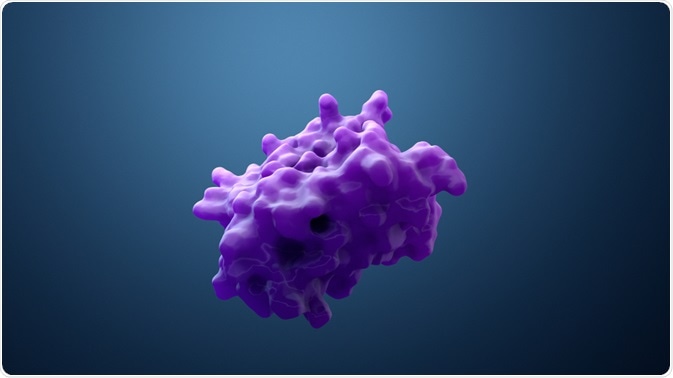How do you identify proteins with a low abundance?
Studying human serum has been an important part of identifying markers for disease diagnosis and monitoring. One of the greatest challenges with this is that blood serum is complex, as it contains a small number of highly abundant proteins, the concentrations of which can vary between individuals.
As many as 80% of the proteins in serum may be Albumin, causing disease marker proteins such as prostate-specific antigen to be masked as they are present in only picogram to nanogram per milliliter concentrations.
To overcome the difficulty of analyzing low-abundance proteins in a sample dominated by a few proteins, scientists deplete the protein that is highly abundant (albumin in the case of serum). Tang and co. detailed a proteomics method combining four separate techniques for analysis of serum proteins. Briefly, the four steps were:
- Depletion of major proteins
- Microscale solution isoelectric focusing
- 1D SDS-polyacrylamide gel electrophoresis
- Liquid chromatography-mass spectrometry
Each of these techniques are defined as “dimensions”, and thus the combination of these four proteomics techniques is termed “4D proteomics”. Variations of this are also possible, for example, nanocapillary RP tryptic peptide separation can be used prior to mass spectrometry instead of liquid chromatography.
 Image Credit: Design_Cells/Shutterstock.com
Image Credit: Design_Cells/Shutterstock.com
Depleting abundant proteins
Tang and co. found that using antibodies was the best way to deplete abundant proteins in a selective manner. Immunoaffinity columns were shown to remove around 98% of high abundance plasma proteins while retaining the majority of low abundance proteins.
This is ideal for studying these low abundance proteins, and methods are available for human plasma as well as other animals such as mice and rats. This is useful as mice and rats are often used as animal models for studying human diseases and drug toxicity.
Microscale solution isoelectric focusing
Isoelectric focusing is an electrophoresis technique that separates proteins based on their isoelectric point. Solution isoelectric focusing separation, which uses immobiline-buffered membranes, offers the ability to separate proteins to a high resolution as the partition between these membranes can be made to specific pH values. This allows proteins whose isoelectric points differ only by 0.01 pH units to be separated.
Tang and co. developed an isoelectric focusing device with seven chambers, which has now been commercialized. This provides capacity for seven isoelectric point fractions using eight immobiline-acrylamide disks. This can be modified to give different configurations. Here, the serum that had been firstly run through an affinity column to deplete the high abundance proteins was then run through the microscale solution isoelectric focusing.
1D SDS-PAGE
Sodium dodecyl sulfate-polyacrylamide gel electrophoresis can separate a protein mixture according to the respective sizes of the proteins within it. In the method devised by Tang and co., the proteins that had been run through the microscale solution isoelectric focusing process were next run through 1D SDS-PAGE. This not only allows proteins to be separated but also allows for certain proteins to be removed from further analysis.
Typically, complex samples require longer running time through the SDS-PAGE in order to allow for proteins to be well separated. However, it is important to acknowledge that a longer run time may result in loss of some low molecular weight proteins, therefore if these proteins are of interest then it would be advisable to reduce the run time.
Before going onto the next step, the proteins are digested by trypsin, and Tang and co. devised a method that could be carried out on the SDS-PAGE gel. Here, the SDS-PAGE gel is cut, then placed into a 96-well plate. Trypsin is then added to the wells with the gel, which digests the protein in the gel.
Liquid chromatography-mass spectrometry
This is the final stage in Tang and co.’s 4D proteomic method. While there has been development in mass spectrometry, for analysis of complex samples it is recommended that the sample is separated prior to mass spectrometry.
Here, Tang and co. utilized reversed-phase high-performance liquid chromatography (RP-HPLC) prior to mass spectrometry. In this way, digested proteins from the SDS-PAGE gel are first separated through the RP-HPLC, and these separated effluents are analyzed on the mass spectrometer.
Further Reading